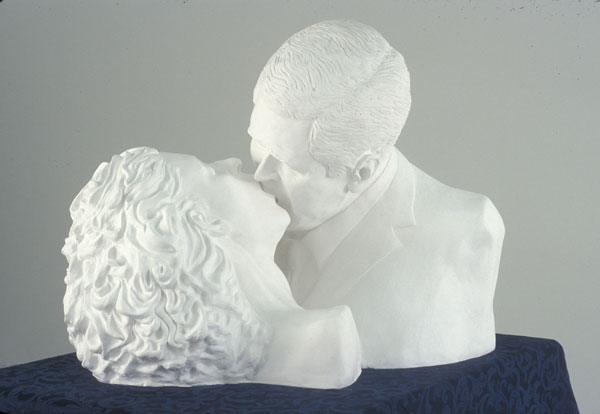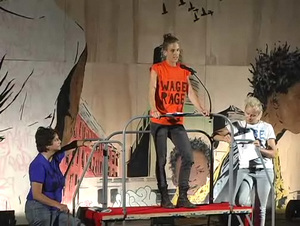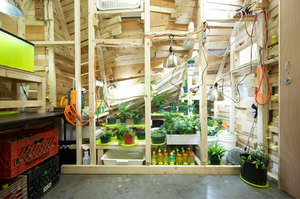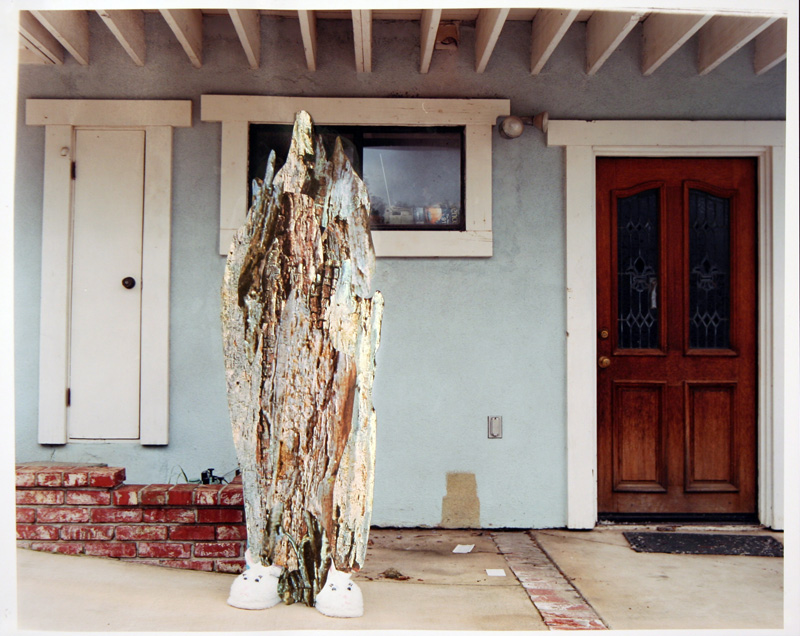This is an archive of the ArtCat Zine, 2007-2009. Please visit our new project, IDIOM.
Recently by Dan DeNorch
Late last September, Working Artists and the Greater Economy, or W.A.G.E., a group composed of artists A.L. Steiner, K8 Hardy, and A.K. Burns, took the podium at the Park Avenue Armory during the Democracy in America, an exhibition and event program curated by Nato Thompson and organized by Creative Time. Like the rest of the country, they were speaking about money; but more specifically, about how artists weren't getting their fair share. While hearing artists complain about the market isn't surprising, W.A.G.E. isn't exactly comprised of marginal figures. These artists are frequently invited to exhibit their work in major institutions and likewise curated into important and highly visible exhibitions.
All of this success (or visibility) isn't what all that it seems. Artists like Steiner, Burns, and Hardy aren't getting large checks for the exhibition of existing art works. In fact, they may be getting nothing at all. For W.A.G.E., the grass is greener up north, in Canada, where artists have been entitled to royalties on exhibited works since the late 1980's -- something the artists in the United States have gone without. Founded in 1968 by a group of artists, the Canadian Artist's Representation (CARFAC) lobbied for nearly 20 years until its efforts resulted in an amendment to Canadian copyright law in 1988. The result, the Canadian Artists' Representation Copyright Collective, has since entitled artists to royalties whenever their art is exhibited. These royalties are doled out on a sliding scale depending on the scope and size of the exhibitor. An artist exhibiting at a small space could expect a few hundred dollars for the showing of a a single work, whereas a solo show of "international scope" could net them ten thousand dollars plus -- Canadian, of course.
There's been a noted lack of progress for anything similar in the United States. "The Artists' Contribution to American Heritage Act" -- a bill whose sole purpose was to rewrite a 40 year-old gaffe in the tax code -- appeared on the floor of the House in the spring of 2000, where it languished for nearly two years before disappearing completely. The bill, which changes the current policy of materials-only deductions for donations of art, would have allowed artists to obtain tax deductions equal to the work's market value upon donation to a museum, library, or non-profit institution -- a benefit which collectors already enjoy.
This wasn't always the case. Both artists and collectors were entitled to market-value deductions on donations before changes were made to the tax code in 1969, when artists (not collectors) were excluded in an effort to stem abuses of the code (allegedly, artists had been claiming inflated prices for their works). Even if this managed to save taxpayers a few dollars, it also gave serious incentive for artists to look elsewhere when donating major works. (Months after the code was amended, Igor Stravinsky reneged on a planned gift of his papers to the Library of Congress, instead opting to sell to a private collector in Switzerland).
Bruce Conner's canonical gestures -- from the splashes of film leader, to the blank shocks of violence and repetitive imagery native to his short films -- were on full display this past Tuesday at Light Industry's most recent offering, Crossroads: A Tribute to Bruce Conner. A neat paean to the pioneering film and collage artist who passed away earlier this July, Crossroads took a look at the shaggy filmmaker's legacy in the works of 25 artists of several generations, working with various media.
The tribute's selections were mostly bite-sized and borrowed from a variety of sources, true to form to many of Conner's shorter, found-footage films. Luther Price's Inside Velvet K, with its mid-century footage of clinical tests, maggots, and solar flares, has the same apocalyptic ring and grainy found aesthetic of Conner's most famous work A MOVIE. Dara Birnbaum's whipsmart Pop Pop Video, a dissection of television gunshots and wounded howls chopped with test patterns (TV's equivalent of Conner's favored black leader) is a slick, New Wave treatment of Conner's favorite topics of media and violence. Amongst these rougher patches were cartoonish oases of critique -- Conner's forte. Animal Charm's Edge.TV, remixed the talking-pets blockbuster Homeward Bound into a humdrum (and brilliantly comic) montage of empty front yards and babbling animals. Bradley Eros' l'oop, a film collage built upon a blueberry-hued clip of Olive Oyl, is shot through with snippets of ethnological footage and boasts a soundtrack of Nancy Sinatra, Woody Woodpecker's cackle, and Popeye's tuneful groans.
Conner's persistent and effective use of music in much of his work -- at one time or another he'd worked with Toni Basil, Devo, Brian Eno and David Byrne to essentially create the music video -- was present in the anxious throb of Roger Beebe's TB/TX Dance; John Michael Boling and Javier Morales' frenetic, screen-obsessed Blast Yr Body; and Oliver Laric's 50 50 2008. In the last work, appropriated snatches of various YouTubed fan-made renditions of 50 Cent's In Da Club are edited into a seamless music video. Laric's digital cut-and-pastes become a wry translation of the film editing hand, while the artist imagines YouTube as the new cutting room floor and Conner's films as an artistic blank check.

It's the first week of September, when most of the art world wakes from its collective stupor to offer a slew of new openings. And, being an election year, the press releases resound with politics -- the War, the Market, the Race -- with everyone from this year's pile of wits, activists and mandarins looking to add their two cents. Featuring several different takes on things to come -- from moods of veiled optimism, to more cautious, seasoned approaches -- here are ten shows that provide an engaging start to the political season.
Creative Time is throwing its own version of a national convention with Convergence Center, filling the massive Park Avenue Armory with performances, installations and artworks. Among the myriad spectacles -- wandering surveillance balloons and a "functional replica of America's first submarine" -- there's a laundry list of political theorists, artists and activists scheduled to give talks tackling a range of issues from "city politics...to cultural production." Downtown, artists are embracing the market. The latest iteration of Phoebe Washburn's fascinating, crude factories (see the Gatorade-fueled nursery she furnished for this year's Whitney Biennial) is at Zach Feuer in Tickle the Shitstem. A vision in plywood, the eponymous Shitstem manufactures "beverages, pencils, colored urchins and t-shirts" endlessly -- until it breaks. Kevin Bewersdorf's shamanistic take on corporate culture will be on full view when his website-slash-corporate identity, Maximum Sorrow, plasters V&A with brochures, posters and videos in Monuments to the INFOspirit. Taking a more meditative approach to labor and production, Amanda Coogan will scrub a wide, sun-colored dress for hours at a time in her Sisyphean performance Yellow at Artists Space.
Several exhibitions are looking backwards for instruction -- a line-up of shows gives photographic renditions of some of the 20th century's most notable conflicts. Susan Meiselas' retrospective In History will exhibit the stark work she completed following the Sandinistas in Nicaragua and, later, her coverage of the Kurdish uprisings -- providing a framework to ask incisive questions about the use of photojournalism in war. An admittedly more wistful take on the possibilities of revolution, Burt Glinn's Havana remembers a peach-faced Castro and a fawning populace at the end of the Cuban revolution (the gray afterglow of Castro's reign or the messy politics of a Ché t-shirt should a provide good counterpoint to the show's sheeny idealism). Of the three, it's Josef Koudelka's Invasion: Prague '68 that may prove the most prescient of the bunch; his feverish series of large-scale photos capture Russia's invasion of Prague nearly 40 years ago, bringing swiftly to mind the superpower's recent military intervention in South Ossetia. In a more contemporary vein, stalwart Martha Rosler updates these references with her photomontages that splice vignettes of the Iraq War with haute-couture spreads in Great Power" at Mitchell, Innes & Nash.
A more indirect, puckish appraisal of American politics is available too. While Allison Schulnik's goopy avatars of clowns appear garish and kitsch, it's her unsparing and exacting use of paint that betrays a tragic reading of culture in No Luck Too at Mike Weiss. The monomaniacal Agathe Snow follows up on her previous projects (an eschatology of New York, a week-long dance marathon) with Just Say Yes, an all-over installation at James Fuentes. From the artist's statement--an effusive rant on Leonardo DaVinci and the American Dream -- to the lines of at-attention ladders in the work, Just Say Yes provides a welcome buoyancy, wallowing in primary colors and the possibilities of a wide-open gallery.
Young Curators, New Ideas
Bond Street Gallery - 297 Bond Street
13 August - 6 September 6 2008
Young Curators, New Ideas, a rangy new group show at the Bond Street Gallery, is more fortune-telling than decisive statement. Latching onto the moving target of contemporary photography, the exhibition offers six different, and sometimes sparse, opinions on where photography is today (and where it's headed). Each curator was given only ten feet of wall space for the task, resulting in a surprisingly wide-angled show that ably sits conceptual throwbacks alongside brasher new media works.
Falling somewhere in the middle, Alana Celii & Grant Willing's show "Völuspá" (named for a Norse creation myth) tackles the themes of "magic, otherworldliness, secrets and nostalgia." Often weighed down by the ponderous curator's notes, the eleven works on display, as a whole, make for a hard swallow. Giving the show a lone moment of clarity, Gerald Edwards III's candy-colored fable of urbanism, Investigation into the Disruption of Power, manages a pose both reverent and bizarre. The rest of the photographs--aside from their generally solemn tone (desolate interiors and sidelong glances punctuate many of the works)--are an inchoate-looking bunch, lacking any greater conceptual or thematic thread to bind them. While Jon Feinstein's show "Light and Color" shares a similar thematic gloss with "Völuspá" ("science, mysticism, astronomy and the unreal"), it offers fewer works and compensates with photographs that bear a more narrowed, expert focus on their subjects. Noel Rodo-Vankeulen's works, shot in the artless style of the stock image or test photograph, mimic the steady, deadpan eye of Jack Goldstein, undressing rote imagery (geodes, star bursts, and skulls) through an almost empirical gaze. Sunset, from Ann Woo, displays a similar tack, reducing the titular event to a mere swatch of color, the effect simultaneously banal and harmonic.
ZINE
HOME
TIPS / COMMENTS
CATEGORIES
CONTRIBUTORS
- Greg Afinogenov
- B. Blagojevic
- Adda Birnir
- Susannah Edelbaum
- Julie Fishkin
- Paddy Johnson
- Jessica Loudis
- Christopher Reiger
- Andrew Robinson
- Peter J. Russo
- Blythe Sheldon
- S.C.Squibb
- Hrag Vartanian




